
“Henri Matisse: The Cut-Outs” at Tate Modern
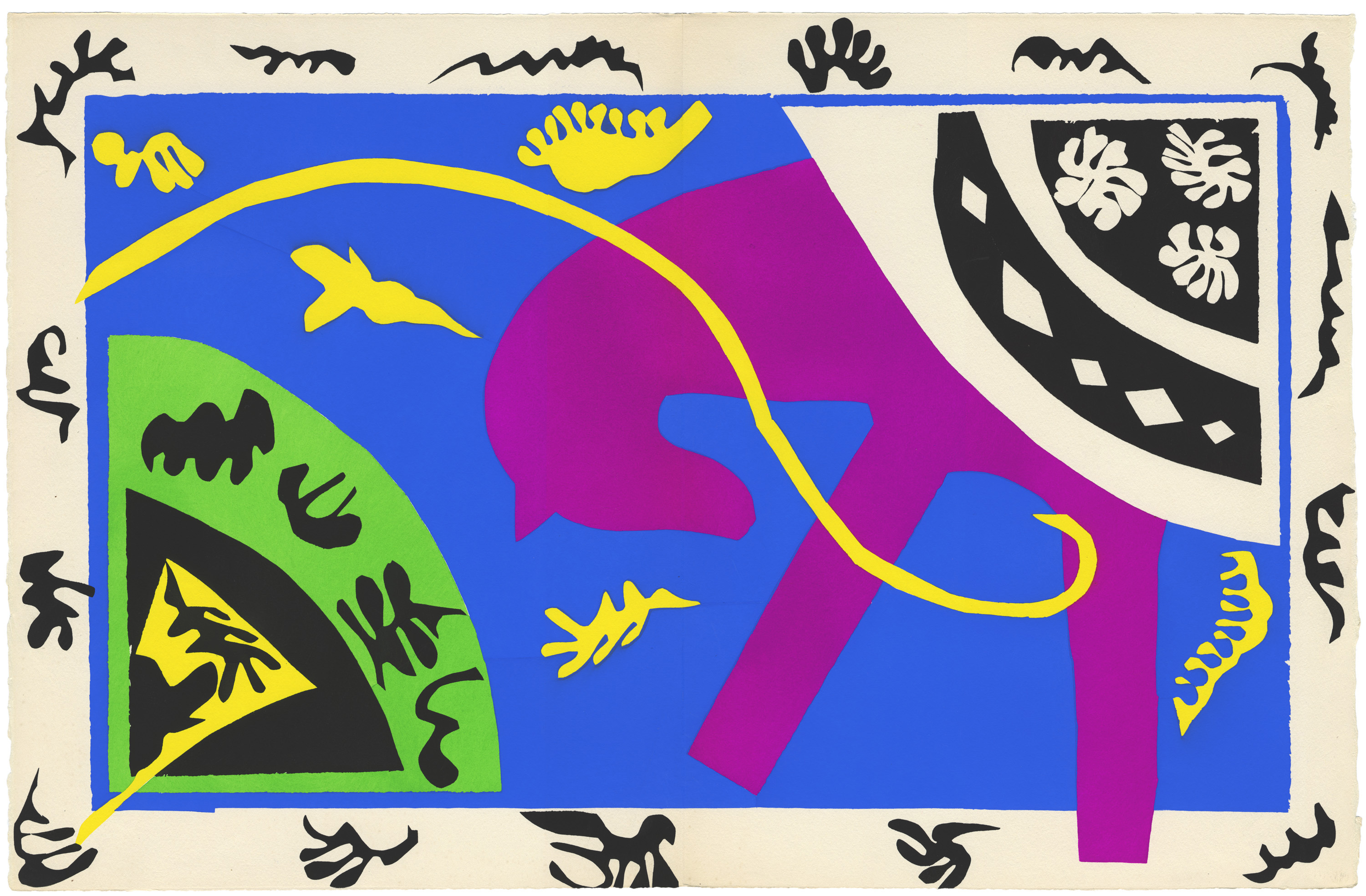
The Artist’s Final Artistic Triumph
Henri-Émile-Benoît Matisse (1869–1954) is one of the leading figures of modern art. He was an outstanding draughtsman, print-maker, sculptor, painter and one of the most significant colorists of all time. The artist is recognized as having spurred the Fauvism movement (1904-1908), along with André Derain, which was an intensely emotional style of painting that used a rebellious color palette.
A prolific artist whose career spanned more than 50 years, Matisse’s whimsical cut-outs, which he created during the final chapter of his life, are among the most admired and influential works of his entire career.
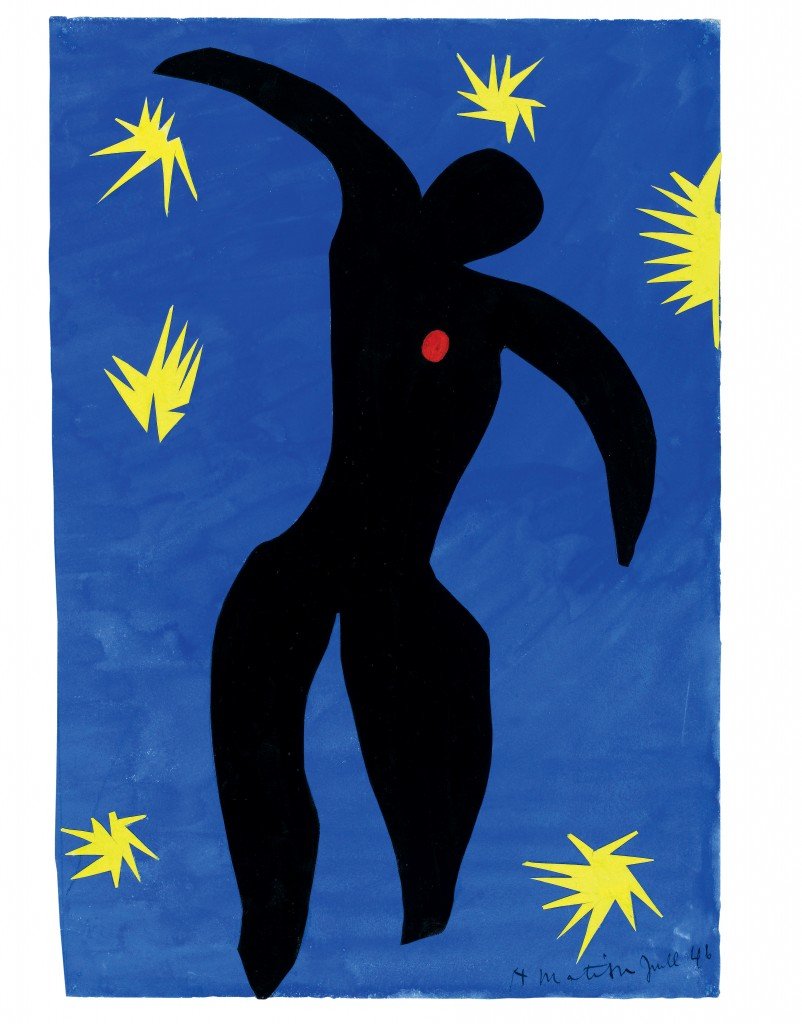
Henri Matisse, “Icarus” 1946. Maquette for plate VIII of the illustrated book Jazz 1947. Digital image: © Centre Pompidou, MNAM-CCI, Dist. RMN-Grand Palais / Jean-Claude Planchet. Artwork: © Succession Henri Matisse/DACS 2014
“Henri Matisse: The Cut-Outs”, which opened at Tate Modern in the U.K. on April 17 and runs through September 7, 2014, is the most comprehensive exhibition ever devoted to the artist’s paper cut-outs. On view are around 120 works, many seen together for the first time, from the period that Matisse called, “cutting into colour”. The works of art came from galleries and private owners around the world.
This historically significant exhibition also encompasses a delightful fusion of paintings, photographs and art supplies, a presentation that is roughly based on Matisse’s own studio in Nice, France. This arrangement provides visitors an insider’s perspective of how Matisse created his art work.
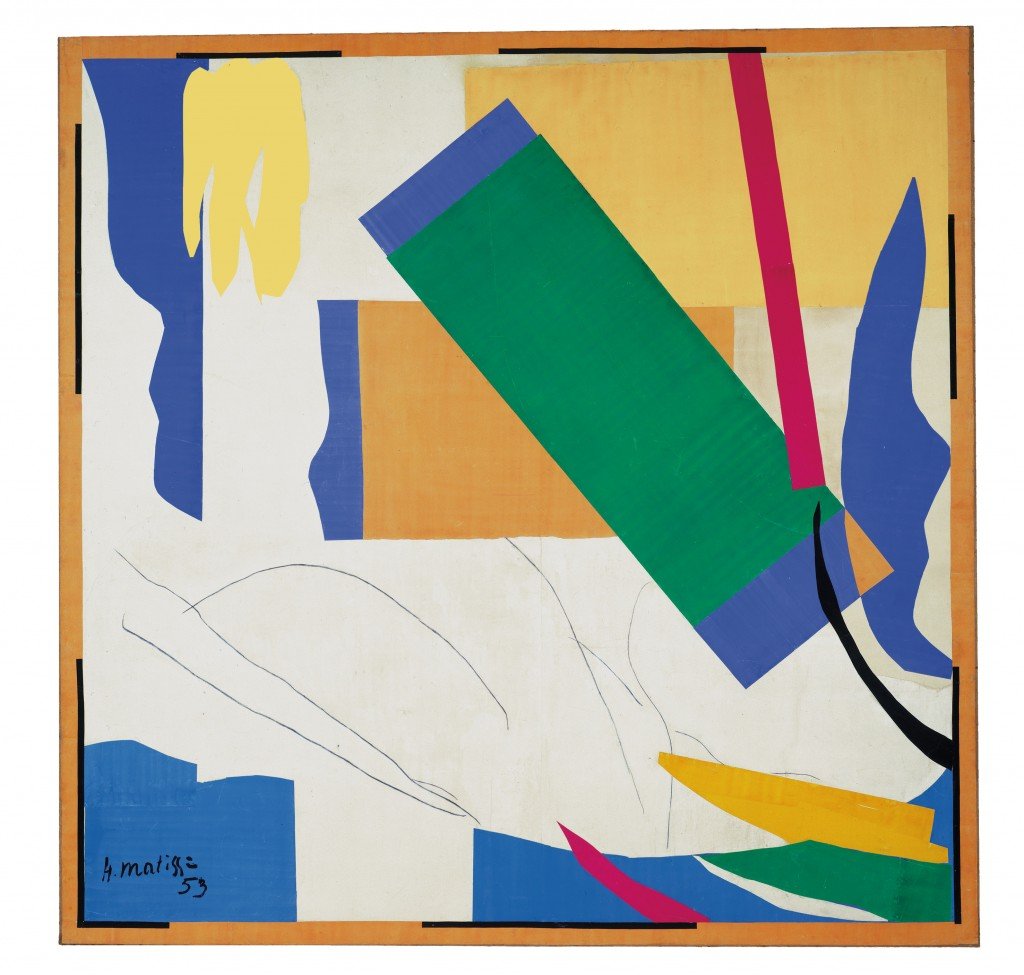
Henri Matisse, “Memory of Oceania” 1952-3. Gouache and crayon on cut-and-pasted paper over canvas. MoMA. Digital image: © 2013. The Museum of Modern Art, New York / Scala Florence. Artwork: © Succession Henri Matisse/DACS 2014
In 1941, Matisse was diagnosed with cancer. Following his colostomy, he was frail and used a wheelchair. He no longer had the physical strength to paint or sculpt in his previous manner. Surprisingly, however, he found renewed creative energies and the companionship of one of his former models, the beautiful Russian-born assistant, Lydia Delectorskaya.
It was during the late 1940’s that the artist was increasingly inspired to turn to cut paper as his primary medium. Her referred to this period as being granted a second life. As he reflected, “Only what I created after the illness constitutes my real self: free, liberated… I have needed all that time to reach the stage where I can say what I want to say.”
With a pair of tailor scissors Matisse cut sheets of hand-painted paper into various shapes and sizes that were either abstract or organic forms that resembled leaves, algae, seaweed, and coral. With the help of Lydia Delectorskaya Matisse would arrange and rearrange the colored cut-outs until he was completely satisfied with the desired balance of form and color. Then the finished composition was glued to some type of support such as paper, canvas, or board.
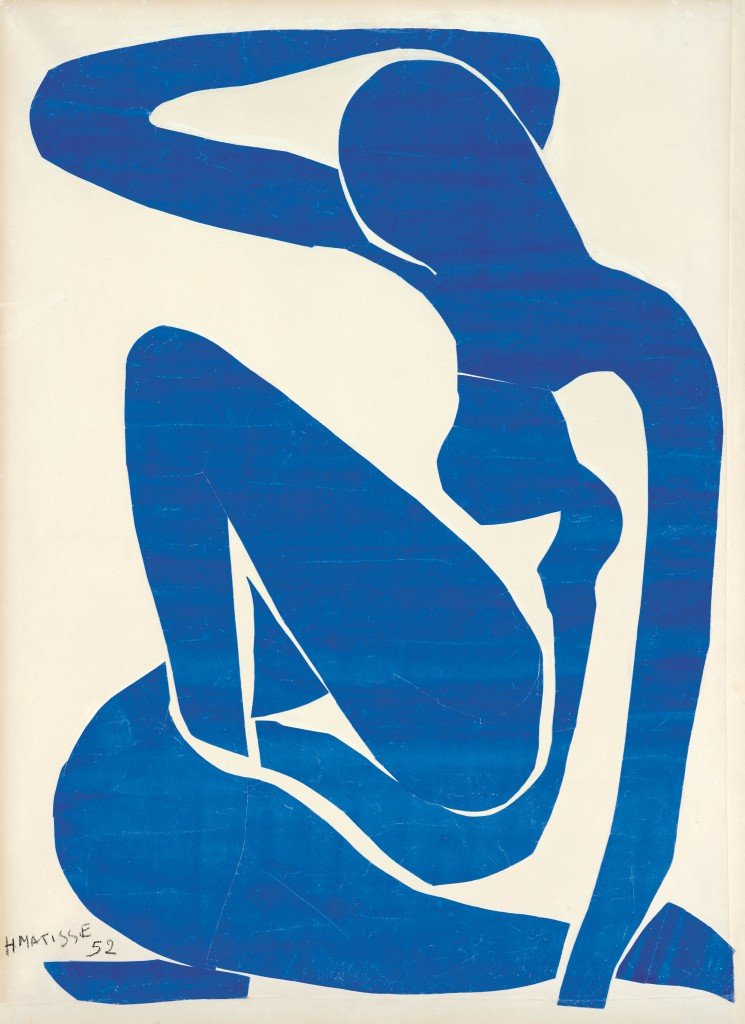
Henri Matisse, “Blue Nude (I)”, 1952. Gouache painted paper cut-outs on paper on canvas, 106.30 x 78.00 cm. Foundation Beyeler, Riehen/Basel. Photo: Robert Bayer, Basel. © Succession Henri Matisse/DACS 2013
Among Matisse’s first creative journeys with paper cut-outs was an exuberant book he began to produce in 1943, during the war. The portfolio contained a limited edition of 100 prints characterized by brilliant colors, poetic texts and joyful circus and theater themes. It was eventually published in 1947. Matisse titled the book Jazz because he related to this style of music as a “chromatic and rhythmic improvisation.”
Initially, Matisse’s compositions were relatively small however, over time, they grew in scale. As his excitement and inspiration grew the scale of his art expanded into enormous room-size installations.
Nicholas Cullinan, the curator of the exhibition states, “I hope that through the exhibition people realize that… if a work is strong enough and innovative enough, it doesn’t matter what medium it is made in.”
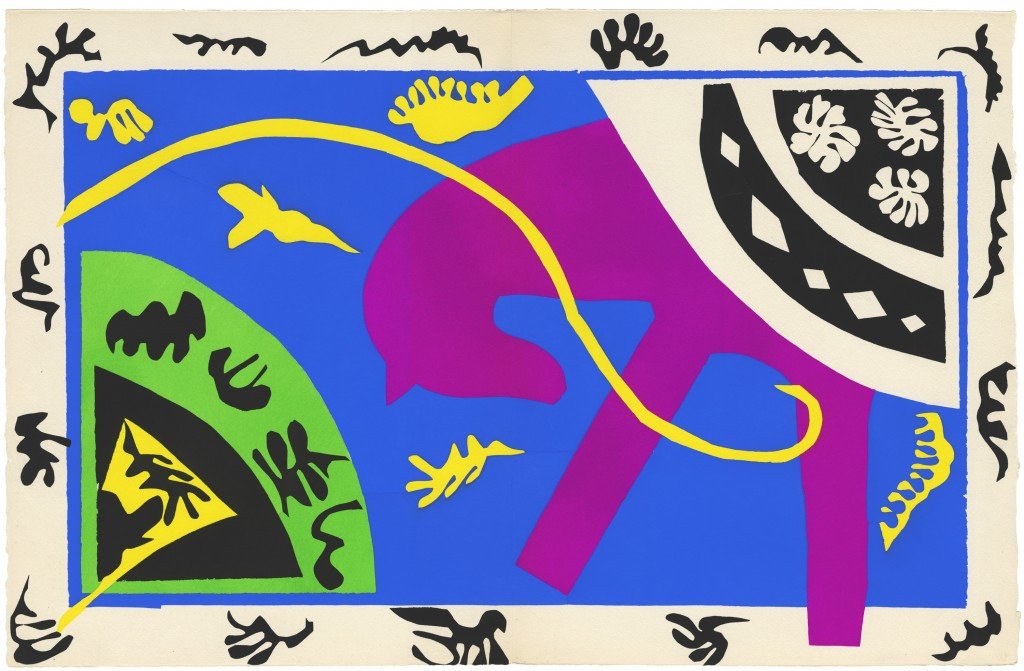
Henri Matisse, “The Horse, the Rider and the Clown” (1947). Henri Matisse/DACS 2014. Maquette for plate V of the illustrated book Jazz 1947. © Centre Pompidou, MNAM-CCI, Dist. RMN-Grand Palais / Jean-Claude Planchet. © Succession Henri Matisse/DACS 2013
Nicholas Serota, Director of Tate Modern, explains why this extraordinary landmark show is a one-in-a-lifetime opportunity: “I have found in co-curating this show a new and deepened admiration for Matisse’s work…These wonderful works have an engaging simplicity coupled with incredible creative sophistication. They are among the most treasured works in the museums from which they are coming.”
If you miss this exhibition at the Tate Modern you can see it at the Museum of Modern Art (MoMA) in New York, NY, from October 25, 2014 through February 8, 2015.
Tate Modern
Bankside, London SE1 9TG, United Kingdom
Phone:+44 20 7887 8888 +44 20 7887 8888
+44 20 7887 8888
http://www.tate.org.uk



































